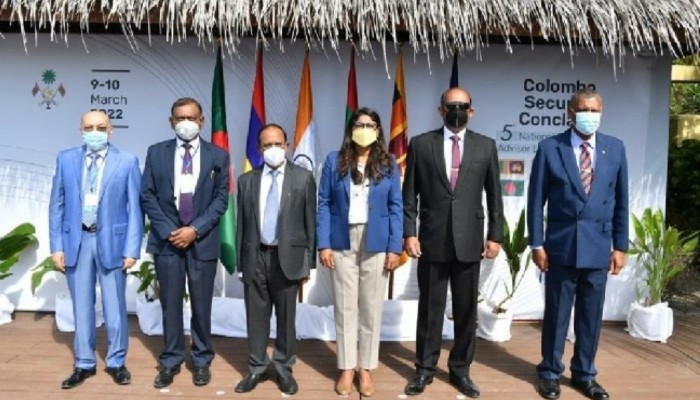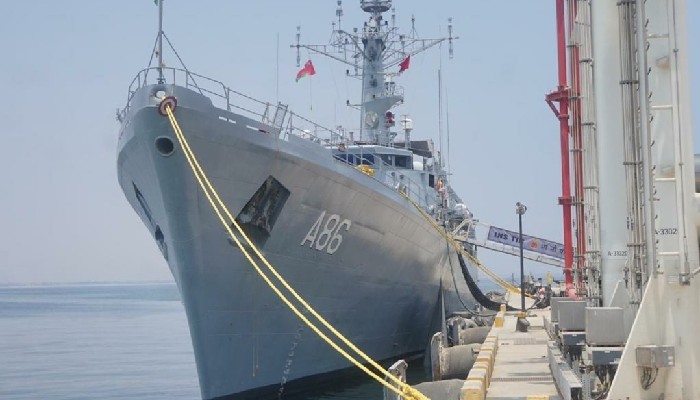Attempts to unilaterally alter the status quo were unacceptable, Defence Minister Rajnath Singh said
India has made “appropriate counter-deployments” in the Eastern Ladakh region to protect its borders against Chinese aggression and ensure that patrolling of the border continues unhindered, Defence Minister Rajnath Singh said in Rajya Sabha today.
The situation this year was very different both in terms of “scale of troops involved” and the “number of friction points”, the Defence Minister said in a detailed statement.
The Chinese side had mobilized a large number of troops and armaments “along the LAC as well as in the depth areas, ” he said, adding that there were several friction areas in Eastern Ladakh including Gogra, Kongka La and North and South Banks of the Pangong Lake.
“In response to China’s actions, our armed forces have also made appropriate counter deployments in these areas to ensure that India’s borders are fully protected,” Singh noted.
Referring to the build-up over the past few months, he said China began massing troops and armaments in the border areas adjacent to Eastern Ladakh; in early May, the Chinese tried to “hinder the normal, traditional patrolling pattern of our troops in the Galwan Valley area, which resulted in a face-off”.
The Ground Commanders of both sides tried to sort out the matter as per bilateral agreements and protocol but, in mid-May, the Chinese side made several attempts to transgress the LAC in other parts of the Western Sector. These attempts were “responded to appropriately by our armed forces”, Singh said.
During a June 6 meeting, the Senior Commanders of the two sides agreed on a process of disengagement that involved reciprocal actions. But the Chinese side created a violent face off in Galwan on the night of June 15 which led to 20 Indian soldiers being killed in action.
“The Chinese actions reflect a disregard of our various bilateral agreements. The amassing of the troops by China goes against the 1993 and 1996 Agreements. Respecting and strictly observing the Line of Actual Control is the basis for peace and tranquility in the border areas and explicitly recognized in both 1993 and 1996 agreements,” Singh told members of the Rajya Sabha.
Pointing out that India and China are yet to resolve their boundary question, he explained that China does not accept the customary and traditional alignment of the boundary between India and China. India believes that this alignment is based on “well-established geographical principles confirmed by treaties and agreements, as well as historical usage and practice, well-known for centuries to both sides,” he said.
“The Chinese position, however, is that the boundary between the two countries has not been formally delimited, that there exists a traditional customary line formed by the extent of jurisdiction that they claim was exercised historically by each side, and that the two sides have different interpretations of the position of the traditional customary line,” Singh said.
According to the Defence Minister, China continues to be in illegal occupation of approximately 38,000 sq. kms in the Union Territory of Ladakh. In addition, under the so-called Sino-Pakistan 'Boundary Agreement' of 1963, Pakistan illegally ceded 5,180 sq. kms. of Indian territory in Pakistan Occupied Kashmir to China. China also claims approximately 90,000 sq. kms. of Indian territory in the Eastern Sector of the India-China boundary in Arunachal Pradesh.
In the late 1990s and upto 2003, the two sides engaged in an exercise to clarify and confirm the LAC. “But, thereafter the Chinese side did not show a willingness to pursue the LAC clarification exercise. As a result, there are some areas where the Chinese and Indian perceptions of LAC overlap,” he pointed out.
In these areas, as also with other sections of the border areas, the various agreements govern the manner in which troops of both sides should operate and deal with situations of face-offs to maintain peace and tranquility.
India’s approach, the Defence Minister said, was guided by three principles: both sides should strictly respect and observe the LAC; neither side should attempt to alter the status quo unilaterally; and all agreements and understandings between the two sides must be fully abided by in their entirety.
Expressing confidence that India’s brave soldiers would be able to surmount every challenge, the Defence Minister urged the House to unanimously honour the courage and valour of the Armed Forces. “A message of unity and complete confidence of our brave soldiers will resonate not only across the country but also across the world and shall infuse a new confidence, new energy and unlimited enthusiasm in our forces,” he said.
 Contact Us
Contact Us  Subscribe Us
Subscribe Us









 Contact Us
Contact Us
 Subscribe
Subscribe
 News Letter
News Letter

